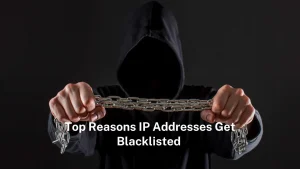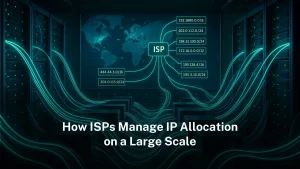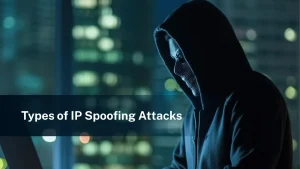
- IP address blacklisting is a security method that servers and services use to block traffic from sources that are known or thought to be harmful. And if an IP address shows up on a real-time blacklist (RBL) or a domain name system blacklist (DNSBL), it can be stopped from sending emails, opening websites, or using online services. This often happens because of bad actions. However, in some cases, ordinary users may also be blacklisted, such as when their server Settings are incorrect, their devices are infected, or the shared hosts they use have problems. And experts say blacklists are strong tools that help stop spam and online threats. But they also say these tools can hurt good organizations when servers are not set up right or are used by others without the owners knowing.
Sending spam emails
When an ip address frequently participates in the sending of spam, it is very likely to be blacklisted. Especially when it sends a large number of unsolicited business emails in a short period of time, various anti-spam systems (such as Spamhaus or Barracuda) will automatically mark it and add it to the blacklist.Although this mechanism effectively curbs spam, it may also cause “accidental damage” – resulting in all emails sent from this IP being intercepted, including normal business transactions.
In actual operation, many enterprises encounter such problems not due to subjective malice, but often because of technical oversins: it could be that the mail server is improperly configured, or a certain employee account is hacked and turned into a spamming tool. However, the cybersecurity system does not distinguish these details. Once an alarm is triggered, the entire IP address will be completely blocked.
To prevent this situation, modern enterprises generally adopt the triple verification mechanism of SPF, DKIM and DMARC. These technical standards are equivalent to setting up a “digital ID card” for emails, which can not only ensure that the emails are indeed from authorized servers, but also effectively prevent others from forging enterprise domain names to carry out fraudulent activities. This protective measure has become a standard configuration for enterprise email systems.
Hosting malware or phishing content
Another common reason for IP addresses being blocked is the spread of viruses or phishing content. The security system will continuously monitor network traffic. Once it detects that a certain IP address is distributing malicious software or forging login pages, it will immediately put it on the blacklist. This situation often occurs without the enterprise’s knowledge – it could be that the server has been invaded or an employee’s computer has been infected with a virus, leading to the malicious exploitation of IP addresses. Although it is understandable, the security system does not distinguish between intentional and unintentional activities.
Once malicious activities are detected, the entire IP will be banned, which will have a serious impact on the normal operation of the enterprise. Once a server is identified as using dangerous code or dangerous links, the system will immediately mark it and add the IP to the blacklist. Some attackers break into websites that run old content systems like WordPress or Joomla, and they place bad code such as harmful scripts. They also set up open redirects that send users to fake websites, and these actions usually happen without the owner knowing. Google’s Safe Browsing system checks billions of websites each day and finds many that are unsafe, so this shows how often websites are targeted. When a site is used this way, the IP address is quickly marked as unsafe, and anything else using that IP may also be blocked by email filters or web firewalls.
Open relays or proxy misconfiguration
Another typical reason for an IP address being blacklisted is the misconfiguration of open relay or proxy servers. Open relay mail servers allow any user to forward emails through them. This design was more common in the past, but nowadays it is highly exploited by spammers. Attackers often scan the network to look for such open relays, thereby anonymously sending a large amount of spam.
Equally risky are improperly configured proxies or VPN servers. If these services are not properly verified for security, they may be exploited by attackers to hide their true traffic sources, resulting in the relevant IP addresses being marked due to suspicious activities. The blacklist system will continuously monitor such abnormal traffic. Once detected, the involved IP or the entire network segment will be blacklisted.It is particularly worth noting that professional prevention lists (SBLS) such as Spamhaus will proactively detect such abusive behaviors.
IP blocking caused by botnets or DDoS attacks
Another typical situation that leads to an IP address being blacklisted is when the device is infected with a zombie virus or participates in a DDoS attack. These controlled devices will work together to send a large number of spam emails, launch flood attacks or attempt system intrusions under the manipulation of hackers, rather than acting alone. Since these infected machines often form part of a large attack network, their associated ips will be quickly identified and blocked by the security system. Cloud servers and edge devices are more likely to be affected if they are not protected well.
Kaspersky’s 2024 research found that weak passwords and missing security updates have made a large number of Internet of Things devices the prey of the new Mirai botnet. The controlled routers and cameras continuously generate malicious traffic, and as a result, their IP addresses are all labeled as “high-risk”. Once the security system detects such abnormal traffic, it will not only ban a single IP, but may even block the entire network segment. Other services that use the same IP may also stop working, even if they are not part of the attack.
Shared hosting environments
A typical feature of a shared hosting environment is that multiple websites share the same public IP address. This architecture is very common in economy hosting services – a single server often hosts hundreds of independent sites simultaneously. When the security protection system detects that any of the websites is sending spam or hosting malicious content, it usually directly blacklists the entire IP address. The problem lies in that the detection mechanisms of these systems are based on IP addresses rather than specific domain names, which leads to a tricky situation: even if other website operators always strictly follow security regulations, they will inevitably be implicated. This “one loss leads to all losses” mechanism forces websites that operate in compliance to bear the consequences for others’ violations.This “joint ban” mechanism exposes shared host users to additional security risks.
This creates a situation where legitimate websites may experience blocked emails, limited access, or reduced traffic, even though they did nothing wrong. Website owners on shared hosting usually cannot see or control how other users manage their domains, but they still share the consequences. One misconfigured site or compromised account can bring reputation damage to all others using the same IP. In such environments, the risk of blacklisting is harder to avoid, because each site depends not only on its own actions but also on the actions of others on the server. The entire group may be affected before the issue is even discovered.
Poor reputation or previous abuse
Some IP addresses are often blacklisted because of their past poor usage records. This situation usually occurs in two scenarios: one is when an enterprise starts to use an IP address that has been used by others before, and the other is when it changes its network service provider and acquires a new IP address segment. Even if the current user is fully compliant, as long as these ips have ever been used to send spam or carry out malicious activities, the bad reputation they leave behind may still lead to continuous bans. Such historical stains often bring unexpected troubles to new users. The new users may not realize this at first, but they soon notice problems with email getting blocked.
Mail systems look at the history of an IP when deciding whether to accept a message, and they are careful with any address that does not have a clean or known record. New IPs without past use are also checked more strictly. Services like Microsoft’s SNDS and Google’s Postmaster Tools let admins check how their messages are treated. These tools show whether the IP is trusted, delayed, or blocked. They also help explain problems when mail does not reach its target.
Reverse DNS and PTR record issues
Some mail servers may get blocked because their IP addresses do not have proper reverse DNS records.When receiving emails, email services usually verify the configuration of reverse DNS (PTR records). This mechanism is used to confirm the correspondence between the IP address and the sent domain name. If the PTR record is missing or the displayed domain name does not match the sending domain name, the email is very likely to be rejected or directly classified as spam. Mainstream email service providers like Gmail will strictly enforce this inspection.
This situation is particularly common when new servers are deployed. When administrators configure the server, if they neglect the setting or correction of PTR records, it will lead to problems in email delivery. Even if the content of the email is completely compliant, such a technical oversight may still seriously affect the normal delivery of the email. It also happens when a hosting company gives out new IPs without setting the records at all. Some services leave it to the user to finish the setup. If no one notices the problem, messages from that IP may be treated as spam. Many filters use this check early, so missing it can lead to delivery trouble even if the message itself is clean.
High volume of unknown recipients
If a mail server frequently sends emails to some non-existent email addresses, it is very likely to be blocked.server sends emails to a large number of invalid addresses, it often leads to being blacklisted. This situation mainly stems from three common operations: using unverified historical email lists, adding unconfirmed recipient addresses, or conducting mass sending by blindly guessing addresses. Whenever the number of returned invalid emails reaches a certain threshold, the anti-spam system will determine that the server has suspicious behavior. Even if the sender has no ill intentions, this seemingly “careless” email sending mode will trigger the defense response of the security mechanism, ultimately affecting the normal delivery of emails.
Many mail systems track how often a server sends to valid users compared to how often it hits invalid ones. If the number of failures stays high, it may affect the reputation of the sending IP. Cisco’s SenderBase checks this by comparing how many emails are accepted and how many bounce. When the ratio gets worse, the system lowers the score of that sender. Some services slow down incoming mail from that IP, and others may block it completely. This can start before the sender notices anything is wrong, especially if no one checks the bounce reports.
FAQs
FAQ 1: Why would my IP get blacklisted even if I didn’t send spam?
Because your server may have wrong settings or be infected. If others share the same IP and cause problems, you will still be affected.
FAQ 2: What is the risk of using shared hosting in relation to blacklisting?
If one website on the server sends spam or hosts unsafe content, the full IP may be blocked, and every site using that IP will face the result.
FAQ 3: How do PTR records affect mail delivery?
Missing or mismatched PTR records can cause emails to be marked as suspicious or blocked because they are used to verify the authenticity of the sender – major service providers like Gmail strictly enforce this check.vices will treat the message as untrusted and may stop it from being delivered.
FAQ 4: Will recycled IP addresses cause delivery issues?
Yes, if an IP address has been blacklisted for sending spam in the past, even if the user is changed, there may still be email delivery problems in the initial stage. It is necessary to gradually restore credibility through standardized sending behavior.
FAQ 5: What consequences will result from sending a large number of emails to invalid addresses?
When many emails bounce, filters may think you are guessing or not checking your list. This lowers your IP score and affects delivery.









Leave a Reply